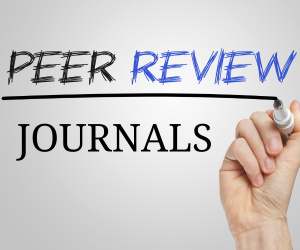PSYCHO-BEHAVIOURAL HEALTH AND PERSONALITY IN SOUTHERN NIGERIA: PERSPECTIVES ON EMOTION
DOI:
https://doi.org/10.53555/nnmhs.v2i11.626Keywords:
Mental Health, Emotional health, Needs, Adolescents, Emotional health needsAbstract
The study identified the mental and emotional health needs of adolescents in the Niger Delta region of Nigeria with special reference to Rivers State. Four specific objectives with corresponding research questions and one null hypothesis guided the study. The study utilized cross-sectional research design. The study covered a population of 1,559,615 adolescents in Rivers State. A sample of 1,632 adolescents filled the questionnaire but data from 1375 copies of completed questionnaire representing 84 per cent return rate were used for analysis. Multistage sampling procedure was adopted to draw the sample from the population. The instruments for data collection were a questionnaire and focus group discussion guide. Means and standard deviation were utilized to answer the research questions, while t-test and ANOVA were utilized in testing the hypotheses at .05 level of significance. Qualitative data generated from the focus group discussion were used to substantiate the quantitative data. The finding of the study revealed that adolescents in Rivers State have mental and emotional health needs always; both male and female, age groups 10-15years, 16-18years and 19-24years; and urban and rural adolescents have the needs always. Based on the findings, it was recommended among others that programmes should be put in place in order to meet and satisfy adolescents mental and emotional health needs.
References
.Anaekwe, M.C. (2007). Basic research methods and statistics in education and social sciences. Onicha: Sofic Publication and Printing Ltd.
.Deal Fact Sheet (2011). Emotional health. www.samaritans.org. Retrieved June 22, 2011.
.Frankel, J.Y. & Wallen, N.E. (2003). How to design and evaluate research in education (5th ed.). New York: McGraw Hill Group of Companies.
.Kidiger, J., Donovan, J.L., Biddle, L., Campbell, R. & Gunnell, D. (2009). Suppoorting adolescent emotional health in schools: a mixed methods study and staff views in England. BioMed Central Public Health, 9: 403.
http://www.biomedcentral.com/14712458/9/403. Retrieved July 25, 2011.
.Huffstetler, E. (2013). Wants vs. needs: how to distinguish between the two. About.com guide. www.frugaliving.com/od/…/qtWants_vs_Needs htm. Retrieved June 28, 2013.
.National Population Commission (2006). National population census. Federal Republic of Nigeria: 2006 Population Census.
.O’Donnell, M.P. (2002). Employer’s financial perspective on health promotion. In M. P. O’Donnell, (Ed). Health promotion in the workplace (3rd ed). New York: Delmar.
.Okafor, J.O. and Okafor, R.U. (1998). Emotional and mental health. Nsukka: Ralja Publishers. [9].Onuzulike, N. M. (2007). Contemporary health matters. Owerri: CON Publishers.
. Park, K. (2007). Park’s textbook of preventive and social medicine. (19th ed.). India: M/s Banarsidas Bhanot.
. Reed-Flora, R. & Lang, T.A. (1982). Health behaviours. USA: West Publishing Co.
. Udoh, C.O & Ajala, J.A (2012). Understanding mental and social health. Ibadan: Printmarks Ventures.
. Wagner, K. (2008). Personal interview. Maine Middle School Nurse.
. WHO (1998). The second decade: improving health and development. Adolescent health and development programme. Geneva: The Author
. World Health Organization (2005). Promoting mental health: concepts, emerging evidence, practice: a report of the World Health Organization, Department of mental health and substance abuse in collaboration with the Victorian Health Promotion Foundation and the University of Melbourne. WHO, Geneva.
. Your Health (2011). Your health/emotional health. http/www.seniors.gov.au/internet/seniors/publishinf.nsf/Content/Emotional+health. Retrieved on June 22, 2011.
Downloads
Published
Issue
Section
License

This work is licensed under a Creative Commons Attribution 4.0 International License.
You are free to:
- Share — copy and redistribute the material in any medium or format for any purpose, even commercially.
- Adapt — remix, transform, and build upon the material for any purpose, even commercially.
- The licensor cannot revoke these freedoms as long as you follow the license terms.
Under the following terms:
- Attribution — You must give appropriate credit , provide a link to the license, and indicate if changes were made . You may do so in any reasonable manner, but not in any way that suggests the licensor endorses you or your use.
- No additional restrictions — You may not apply legal terms or technological measures that legally restrict others from doing anything the license permits.
Notices:
You do not have to comply with the license for elements of the material in the public domain or where your use is permitted by an applicable exception or limitation .
No warranties are given. The license may not give you all of the permissions necessary for your intended use. For example, other rights such as publicity, privacy, or moral rights may limit how you use the material.







